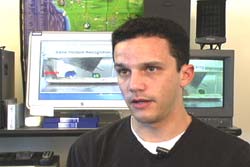Here you can find a summary of innovations in the fields of information and data processing and up-to-date developments on IT equipment and hardware.
This area covers topics such as IT services, IT architectures, IT management and telecommunications.

Security mechanisms also must protect what goes out
Passwords to guard entry aren’t enough to protect complex data – security mechanisms also must protect what goes out
“Data can easily find itself in danger of being accessed by ’bad guys,’” says emeritus professor of computer science Gio Wiederhold, who will speak about trusted information databases Feb. 14 in Seattle at the annual meeting of the American Association for the Advancement of Science (AAAS). “Pa

Equipped with cutting-edge techniques to track the activity of tens of thousands of genes in a single experiment, biologists now face a new challenge – determining how to analyze this tidal wave of data. Stanford Associate Professor of Computer Science Daphne Koller and her colleagues have come to the rescue with a strategic approach that reduces the trial-and-error aspect of genetic sequence analysis.
’’What we’re developing is a suite of computational tools that take reams

In these days of heightened security and precautions, surveillance cameras watching over us as we cross darkened parking lots or looking over our shoulders at airports may seem reassuring, but they’re only of use if someone is watching them. Researchers at the University of Rochester’s computer science laboratories have found a way to give these cameras a rudimentary brain to keep an eye out for us, and the research is already been licensed to a Rochester company with an aim toward homeland security.

Semantic Web emerges as commercial-grade infrastructure for sharing data on the Web
Today, the World Wide Web Consortium announced final approval of two key Semantic Web technologies, the revised Resource Description Framework (RDF) and the Web Ontology Language (OWL). RDF and OWL are Semantic Web standards that provide a framework for asset management, enterprise integration and the sharing and reuse of data on the Web. These standard formats for data sharing span application, enterp

’Smart vivarium’ could enable better care of laboratory animals
Computer scientists and animal care experts at the University of California, San Diego (UCSD) have come up with a new way to automate the monitoring of mice and other animals in laboratory research. Combining cameras and distributed, non-invasive sensors with elements of computer vision, information technology and artificial intelligence, the Smart Vivarium project aims to enhance the quality of animal research, while at

The convergence of information and communication technologies into a national “cyberinfrastructure” is poised to revolutionize the environmental sciences and many other disciplines in the coming years, according to researchers presenting at the AAAS Annual Meeting in Seattle. The two Feb. 13 sessions on cyberinfrastructure were organized by the heads of two National Science Foundation (NSF) directorates.
The speakers will describe a very near future in which computing capabilities will pr